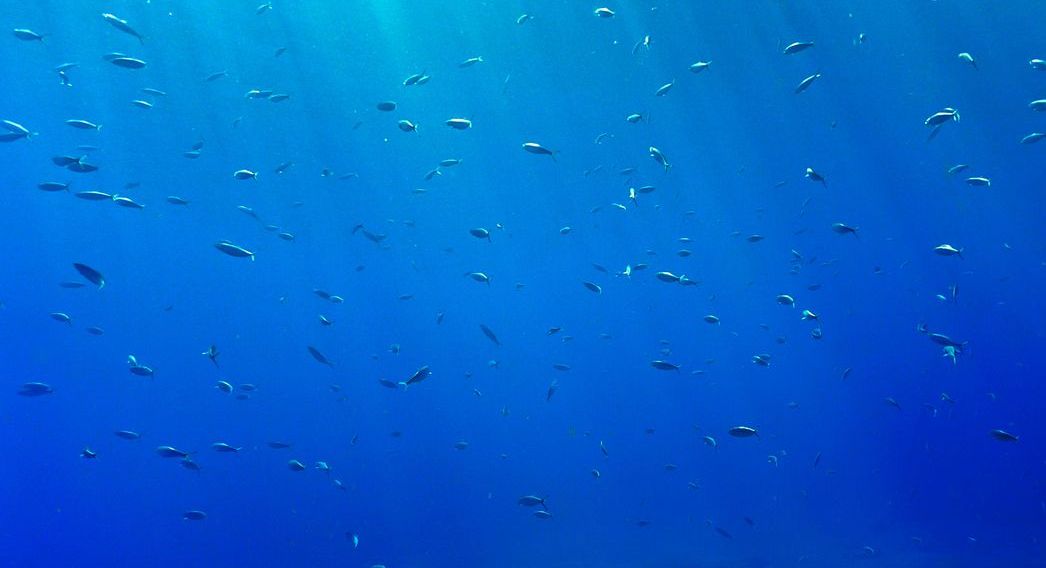California Habitats
Rocky Intertidal
A habitat found in rocky parts of the coastline where at high tide rocks are partially or completely covered with water and at low tide, parts of rocks are above the water level and exposed, and pocket pools remain. Often this habitat has turbulent water and crashing waves for periods of the day. Some examples of animals in the Report Card that live in the rocky intertidal are sea palm, black abalone, ochre sea star, and owl limpet.
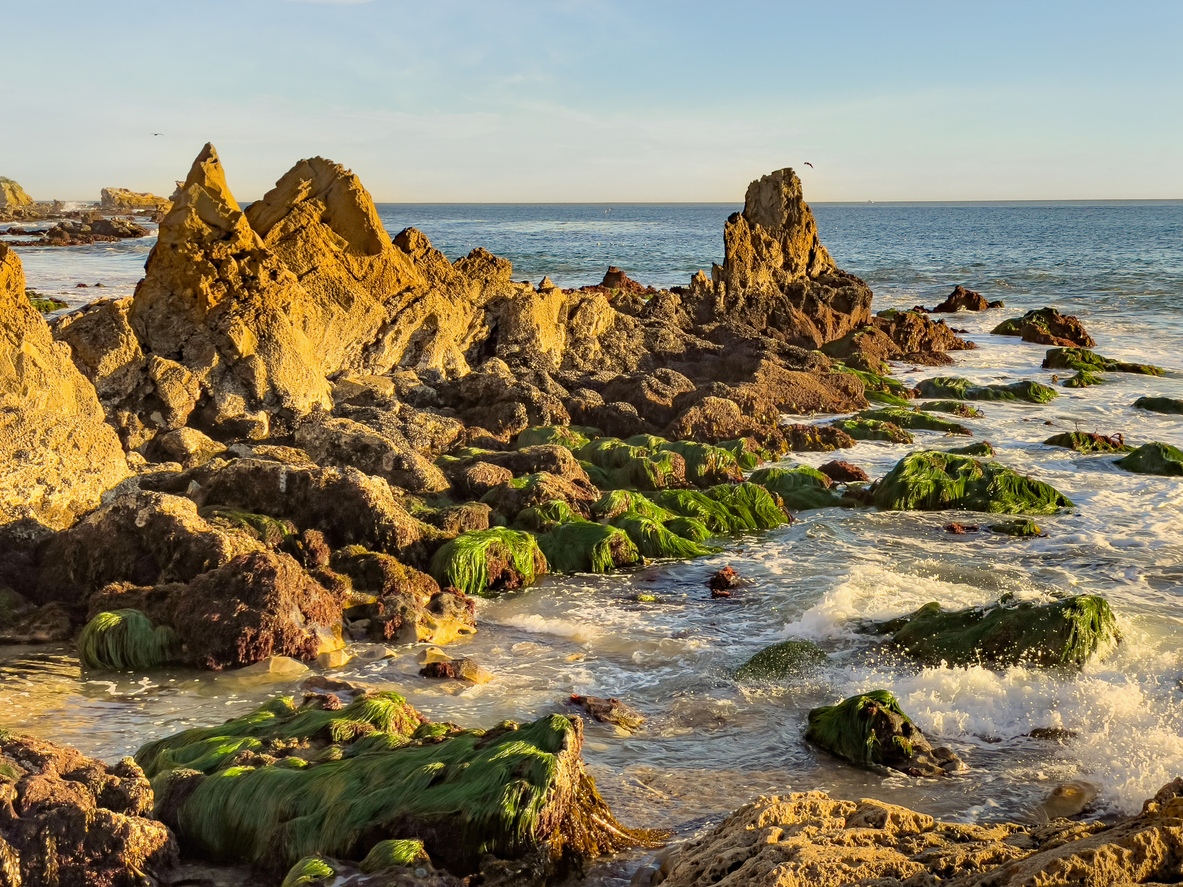
Kelp & Rock Ecosystem
Often described as an underwater forest, kelp, a brown algae, grows in tall strands from the bottom of the ocean to the surface. It attaches itself to rocks with a holdfast, similar to a root system. Many species found in kelp forests also are found in adjacent rocky reef habitats that may not have kelp, or have it intermittently. Kelp can only grow to 40m meters of depth, but rock ecosystems can extend much deeper. Some examples of animals in the Report Card that live in the kelp & rocky ecosystem are Garibaldi, white abalone, southern sea otter, and giant sea bass.
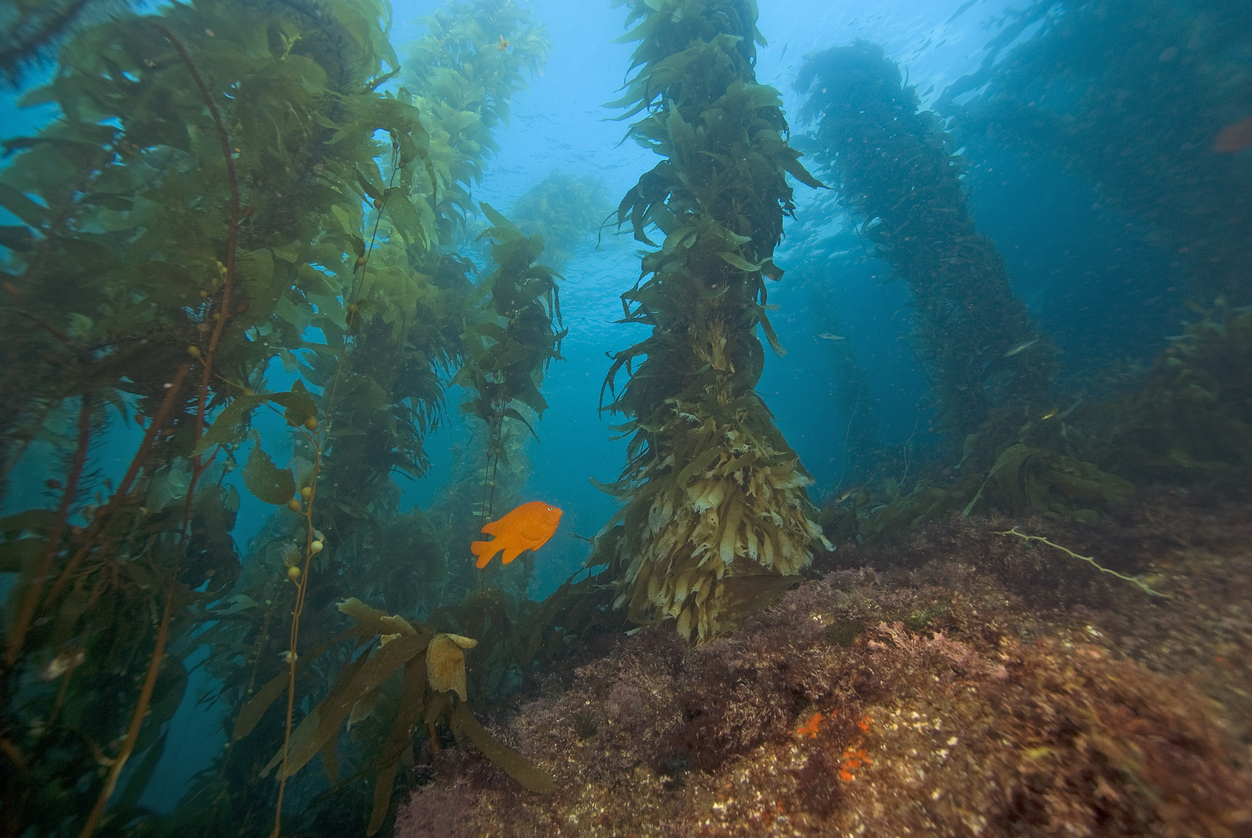
Estuarine & Wetland Ecosystem
Estuarine and wetland ecosystems are a transition zone between the land and the ocean. They often have brackish water and salt tolerant plant species that can survive when exposed at low tide. Low to no natural wave activity. The sediment in these areas can range from mud to sand. Estuaries and wetlands serve as nursery areas for many marine species. Some examples of animals in the Report Card that spend time in the estuarine & wetland ecosystem are Brandt’s cormorant and black oystercatcher.
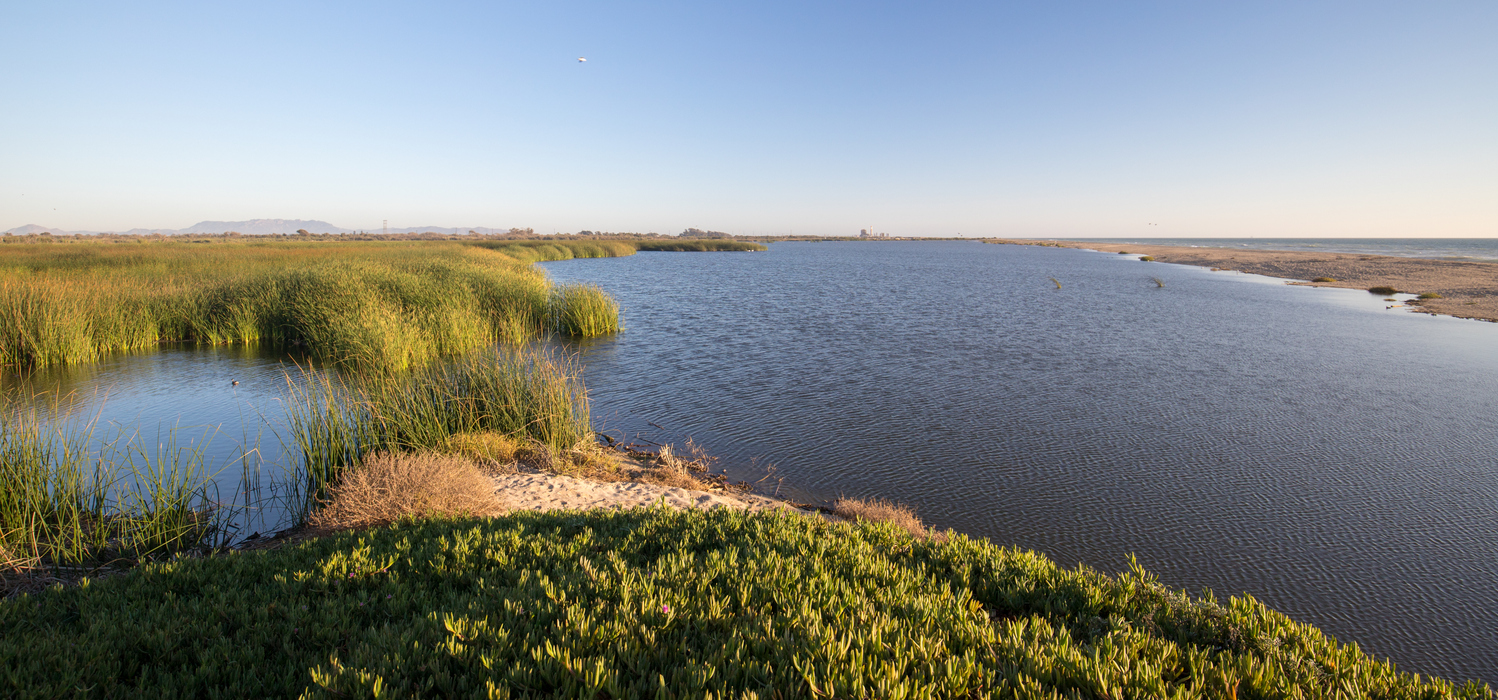
Soft Bottom Intertidal & Beach
Soft bottom intertidal ecosystem is one which is partially exposed at low tide and completely submerged at high tide. The adjacent beach area is most often dry, though depending on the coastline slope may become totally submerged at times. The sediment in this ecosystem ranges from mud to sand. Water may be turbulent with crashing waves to calm depending on the location. Examples of animals in the Report Card that spend time in the soft bottom intertidal and beach are California least tern, California brown pelican and California sea lion. Soft bottom subtidal are adjacent to soft bottom intertidal areas but are completely submerged at all times. Sediment can range from mud to sand. Plants may be present in this ecosystem, such as eelgrass. An example of an animal in the Report Card that is commonly found in the soft bottom subtidal is the green sea turtle.
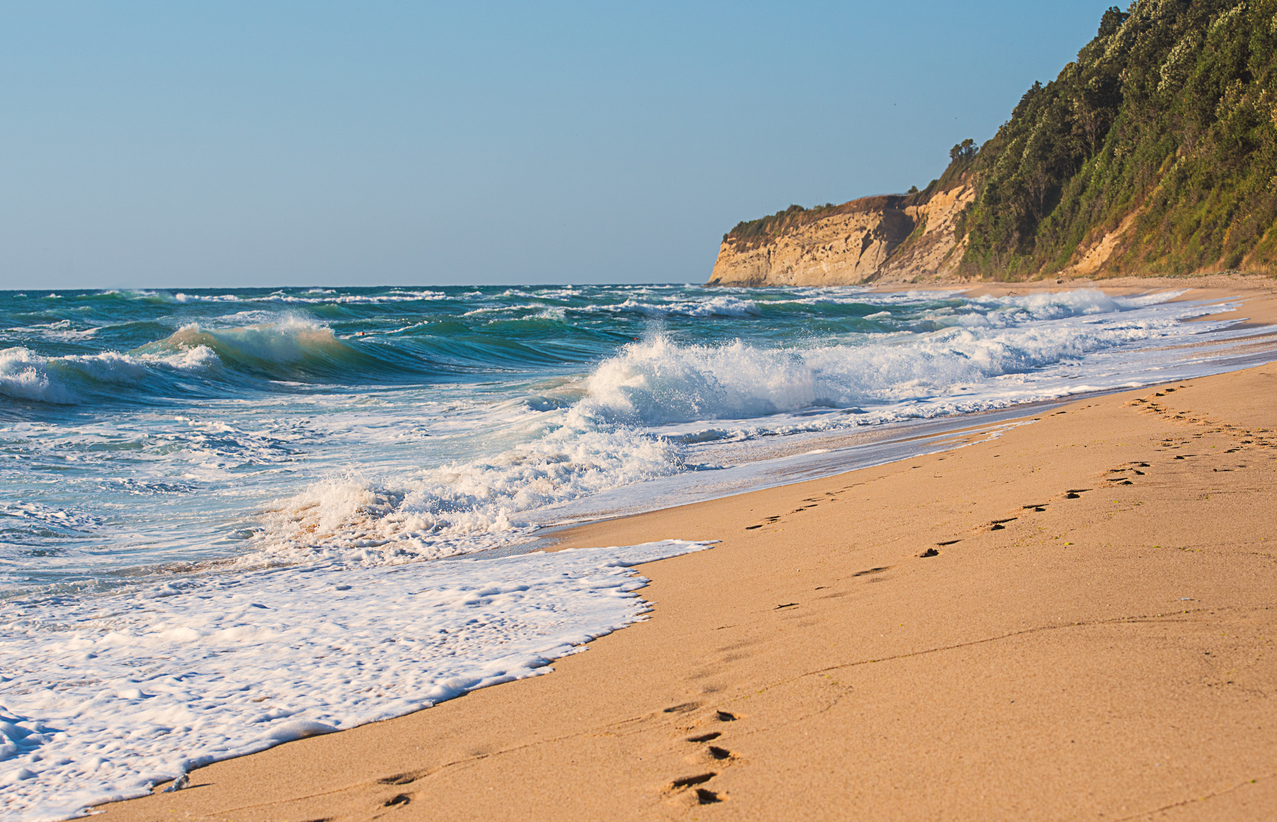
Pelagic
Areas of the ocean that are far from the coastline and generally with deep water are known as open ocean. The pelagic zone is the area of the open ocean above the seafloor. Some examples of animals in the Report Card that live in the pelagic zone are gray whales, northern anchovies and Pacific sardines.
